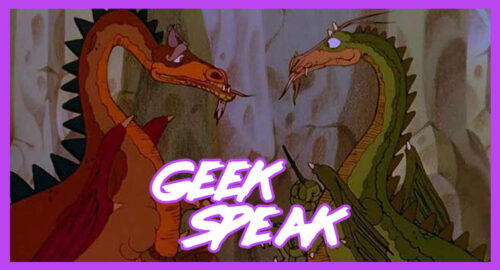On Sunday I played in my first tournament. By that I mean not only my first tournament for Star Wars Unlimited (SWU) and also my first tournament for a Trading Card Game (TCG) but just straight up the first tournament I have played for anything. Ever. Actually the first time I had done anything of a competitive gaming or sporting nature since primary school.
I travelled up to Leicester from London to take part in UK Tournament Circuit‘s (UKTC’s) first SWU tournament. The tournament featured 95 players, which to my knowledge makes it the biggest tournament outside of the USA since the release of Shadows of the Galaxy, the second set of SWU released so far. Although this looks like it will be surpassed by a Premier Tournament taking place in Manchester this coming weekend. It is called a “1k” because there is £1,000 of total prize money with £400 going to the winner.
No one dreams of coming second place. So of course I would have loved to have won the tournament (spoilers: I did not) but knowing that I was not even the best player attending the event from my local game store, I had set some more reasonable expectations. My aim for the tournament was to win more games than I lost. With 95 players in the tournament, it was set for seven rounds, so I just had to win four games to achieve my aim. This seemed achievable. The tournament format is seven rounds of “Swiss” – which is a term that originates from a 1895 chess tournament that took place in Switzerland that first used the structure. As opposed to a Round-robin structure where every player has to play every other player, the Swiss structure pairs players against each other with similar records until, ideally, one player remains undefeated. In the case of tied records, ranking is based on the win ratio of the players you have played against.
Decks in SWU are often referred to by the leader and the choice of base. A leader has two aspect colours and the base has an additional Aspect and these dictate the choice of cards that you have access to (you can read more about leaders and Aspect colours in my An Introduction To SWU article.) With a week to go I was planning on playing my “Sabine Green” deck – a deck with a Sabine Wren leader and a Green base. A popular deck that is quite common. It is my strongest deck and a deck that I had won a (very small) local event with. Also the deck I have practised with the most. So on the Monday night before the tournament, I made the slightly crazy decision to switch to a new deck. Having seen a deck getting a lot of buzz online, my head was turned and I was up late on Monday destroying both my Sabine Green deck and my Luke Yellow deck and smashing them together to make a New Han Blue deck.
Han is one of the leaders that has two versions, an older Han was in the Spark of Rebellion set (Set One.) The younger “New” Han from Shadows of the Galaxy (Set Two) is a Heroic Aggression leader (aka a White/Red leader.) These are the same Aspects as Sabine, but switching to a Blue base gave me access to a lot of Jedi – namely; Luke, old Obi-Wan Kenobi, Kanan Jarrus and Rey. Every leader has a power and New Han’s is that he can “cheat” units out at a lower cost, albeit by also doing them two damage in the process. This new combo gave me an exciting mix of a lot of the cards I had access to with Sabine and other cards that worked well with Han. I also thought people would be less well set up to play against a Han deck and more experienced at playing and beating a Sabine deck – arguably my first mistake.
The smaller tournaments I had taken place in – I stop short of calling them “friendly” local tournaments, as that would imply that this larger tournament was unfriendly – and I am pleased to report that was very much not the case, but the UKTC tournament was a tightly run, well organised event, that took matters much more seriously. Full decklists (i.e. a complete rundown of main deck cards and sideboard cards that we would be playing on the day had to be submitted prior to the event.) Fortunately this process was made all the more straightforward by the Limitless software that they use to run the tournament accepting lists imported from SWU DB, where I usually build my decks anyway.
The Limitless website dashboard used to register for the tournament and to submit your deck was also used to announce pairings and what table you were playing at. It made the whole event run like clockwork with military (some would say Empire-like) precision.
The event kicked off at 9.30 am for a 10.00 am start. Shortly before that the website tells me who I’m paired against, I sat down and wait for my opponent. I laid out my Vader play mat, readied my tokens and shuffled my newly formed deck. My opponent took their seat, we exchanged pleasantries and as my deck was already visible, I asked who he is playing: “Inquisitor Blue”. I am filled with dread.
Inquisitor is a fairly unusual leader. One of the few leaders I have never played against in person. A leader I have never tested my new deck against. Worst of all, I know it well enough to know it is fast. Fast enough that I don’t have time to make a mistake. I dealt my opening hand and disaster! I don’t have a turn one play. The changes I made to my deck late last night, just before the submission time, were designed to absolutely avoid this exact situation. I added two more turn-one plays, meaning that I had a well above average number of cards I can play on turn one and I have none of them in my hand, worse still I don’t even have a good turn two play and nothing I want to resource. Fortunately, in SWU, you get one chance to Mulligan your opening hand. I do this, shuffle, draw six new cards… and draw almost the exact same hand, only one card is different and it still doesn’t give me a turn one play. The statistical chance of doing this from a 54-card deck is astronomical.
My luck (or skill) doesn’t change for that game or the next… and I get annihilated! Tournament matches are best of three games, I lose two-nil in blisteringly fast times. A match has a maximum time limit of 55 minutes. I lost in less than 16 minutes.
My next match is against a Bossk Green deck. Okay, this is better news, this is a deck I know very well. I have my own Bossk Green deck in my bag with me. I built a Bossk Green deck that I sold to a friend. I have played with this deck many times, I know its tricks and what it is trying to do. They are closer, longer matches, but I still lose 0-2. It looked like it was going to be a long day.
Fortunately, this is where the tournament structure helps me out a bit. Now I am going to be paired against other players who have also lost their first two games. I am paired against a player running a Sabine Green deck, a very similar deck to the one I ripped apart to make my New Han Blue deck. This will give some indication if I made the right decision, but it is also a favourable matchup given that I know the deck well and that, in theory, my new deck should have a favourable matchup against a Sabine deck. I won 2-0. I am relieved. My first win of the day and I am at least not going to come away without winning a match-up.
Next up I am paired against a Boba Fett deck. A very popular deck that does well in tournaments. However, I had two main advantages; this is a favourable match up for my deck and I tested this deck against a Boba Fett deck played by a very good player at my local store. Harvey is the same player I mentioned before who makes me know that I am not the best player from my local store – he kindly gave me some advice on making some changes to my deck. In hindsight, I should have listened to even more of his advice than I did. He is young, but a very experienced TCG player and as I told him at the event, he is the best SWU player I know. Partly thanks to his guidance, I took another 2-0 victory against Boba Fett.
Onto my next match up and given the pairing system, it is likely to get tougher. I am paired against a Grand Moff Tarkin deck. A deck I have some idea on. I built a version of this deck two weeks before the tournament – but this version is a bit different. It is a Tarkin Yellow deck built around vehicles with an emphasis on space units. Not a deck I’ve played against, but one I am aware of and have done some homework on. I take the first game, the other player takes the second – my first match to go to the third game. It goes down to the wire, but I take the victory. I am in the positive! I just need to win one of my last two matches to achieve my aim or even better win both and have a chance of placing in the “top 16” – which is significant as in a longer 2-day tournament (such as the one in Manchester this weekend) being in the top sixteen can make a difference as sometimes the tournament splits on the second day with the top sixteen players going on to compete for the top prize positions. Throughout the day players have been discussing what it will take to place in the top 16 of the top 8 – a record of 5-2 could be enough.
My penultimate matchup is against another Sabine Green deck. Given my earlier victory against a similar deck I am confident. That confidence soon evaporates when it becomes clear this is a stronger deck being piloted by a more skilful player. I lost two matches in quick succession. A lesson in not to get cocky, kid. I am back to even. The only slight saving grace here is that the player that beat me did go on to place in the top 16.

It is all down to my final match. I am paired up against a Lando Carissian Red deck. This is another unusual leader, not one that I am used to and this is a very unconventional deck. It becomes quite clear that this is a lightning-fast deck. Given how the super-fast Inquisitor at the start of the day exposed how weak my deck is to fast decks, this is going to be a problem and before I can stabilize (which is where a slower healing deck like mine can tip the balance in my favour) I lose the first game. The second game starts badly and gets worse. My opponent hits a one-in-a-million combo and obliterates me on turn 3. That is it. My hopes of coming out with a winning record in the positive are dashed.
This matchup ends so soon that my opponent and I have time for a long conversation centred around SWU. Despite having a full day of nice interactions around the game this is the nicest of them all. We had a really great conversation around how much we both love SWU and why we are so passionate about it. Despite dashing my hopes, this is such a great discussion that we end up swapping details to stay in touch afterwards. Which ended up being handy, as I cemented this newfound friendship by (accidentally) stealing from him! As part of the participation prize at the beginning of the day, UKTC gave out three packs of cards and a swanky custom metal initiative token. Distracted by the conversation, I, unknowingly until I arrived back at home, managed to pack up both my token and his! It has been safely returned to him now and hopefully Lando will forgive Han for smuggling out his precious cargo! I am sure Lando won’t bear a grudge.
The aforementioned Harvey did, as expected, much better than me. Having a 5-1 record going into the final round, he is paired up against the only currently undefeated deck for the final round and picked to feature on the live stream. I was sitting with him and his family when this was announced and he was not entirely pleased, but given that he was picked, this was likely as he had the best ranking among the players with a 5-1 record. The matchup was tough for him as the Q’Ira Green deck is difficult for Boba Fett and I know that he was a bit nervous about playing on stream. As you can see at the end of the stream (i.e. the video at the top of the page), he loses 2-0. Really unlucky for him this means that he dropped out of the top 8, placing 9th. You are still the best player I know, Harvey.
I learned a lot from my first tournament. The main takeaway was despite the competitive nature of the event, most SWU players are just happy to play and happy to find a lot of other players who are passionate about the game. I didn’t expect some features, such as having vendors selling products and individual cards at the event, but it makes sense and was a welcome addition. I learned the weaknesses of my deck – unfortunately too late for this contest, but there will definitely be a next time. Especially at the end of this event that UKTC announced another Tournament at the end of September in my home town of London. I am already booked in. This tournament was a great experience. It was well run, the staff were great and everyone was very friendly.
The biggest decision I have to make is to stick with New Han and look to perfect my deck or to run back to the safety of Sabine – or just go left field and play my Bossk Green deck or be even braver (or stupider) and represent my video gaming roots to bring out my Iden Red deck. Looking at the record of the Leicester event overall, there was a player who had a New Han deck who came third – although this was New Han Green deck. However, there were also three players in the top 20 with a record of 5-2 that ran with a New Han Blue deck. There was a Sabine Green deck that came second though (which you can see in the above video.) The Limitless website, handily, gives a breakdown of other player’s decks after the event. So, I can easily correct the deck list selection. Correcting the pilot error may take more parsecs.






